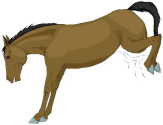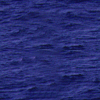Welcome to Strange Navy and Sea Tales, and Nautical terms compiled by
Below is a collection of strange things of the sea. And a listing of nautical terms.
AZC(AW/NAC) Kimberly King, U.S. Navy - Retired
Click on a link below to launch you to each eerie domain!
---------------------------------
LARGEST NAVY SHIP TO DISAPPEAR

-----------------------------------
SKELETON CREW
Taken from the Wellington, New Zealand Evening Post
November 13, 1913 and Agence Havas
-----------------------------------
THE DERELICT

Click here
to read a newspaper article about this huge fish which has made many people believe in "sea monsters".A STRANGE ANNAL OF THE SEA
------------------------------------
FASCINATING JOHN PAUL JONES - FATHER OF THE U.S. NAVY
These are just some highlights of his interesting life...
- He was born in Scotland
- He was apprenticed on a ship at the age of 13. The ship sailed from Scotland to Virginia.
- He studied Navigation in VA.
- He served on 2 slave ships, as a mate.
- He sailed back to Scotland, but on the return trip both the Captain and Mate died, and he took command and sailed the ship back to Scotland.
- The owners of the ship gave him his own command at age 21
- He was terribly disliked by his men, and was said to be very demanding and harsh.
- He was brought to trial twice on murder charges. He got afraid for his life, during the second trial, and fled back to Virginia for safety, where he changed his name to John Jones.
- He could not find any work, so went to the Navy and was commissioned at a LT in the Continental Navy, where he took command of the Alfred. The Alfred was the first commissioned U.S. Naval Ship.
- Jones raised the first American flag to fly on a naval vessel.
- He refused several commands, because he felt them beneath him.
- In a raid he captured a British transport ship, loaded with clothing, and was promoted to Captain.
- He was named as 18th on the promotion list, and was so angry, that for the rest of his naval career he criticized the Navy.
- He commanded the Ranger, and captured the British ship Drake, after an hour's fight off the shore of Ireland.
- He then got command of a rotton 40 gunship which he renamed the Bonhomme Richard, after Ben Franklin. With this same ship, he captured 17 other ships.
In 1779 off Flamborough Head, England, he engaged into a battle with the Seripas, and Countess of Scarborough. These were large 50 and 20 gun ships. Jones ship, the Bonhomme Richard, eventually sank, but the Seripas surrendered before it did.
- He then stayed in Paris and enjoyed his fame, and was given command of the 74 gun ship America.
- Jones then decided to go to Europe, and accept a Rear Admiral commission in the Russian Navy in 1783. But he had an argument with Prince Potemkin, and returned to Paris, where he died at age 43.
- Jones remains returned to the United States in 1905, and he is now buried in a crypt beneath the Naval Academy Chapel.
- In his lifetime, he had few friends, and was never married.
- His famous statement, "I have not yet begun to fight", was said during his fight with the Seripas, when his own ship was sinking and in peril, and he was asked if he would surrender.
The rest is history!

------------------------------------
SHIP'S FIGURE HEADS

------------------------------------
THE LARGEST SAILING SHIP TO DISAPPEAR

---------------------------------------
 MAN WHO SURVIVED 3 SHIPWRECKS
MAN WHO SURVIVED 3 SHIPWRECKS
-------------------------------------

"BENITO OF THE BLOODY SWORD"

The earliest official mention of keelhauling seems to be a Dutch ordinance of 1560 and the practice wasn't formally abolished until 1853.
------------------------------------------------------------------

SEA MONSTERS
" On the 6th of July 1734, there appeared a very terrible sea-animal which raised itself above the water. It's head seemed to reach the maintop. It had a long sharp snout, it blew like a whale, had broad large flappers and the body was, as it were, covered with a hard skin, very wrinkled. Moreover, the lower part was snakelike. When it submerged it raised its tail above the water, a whole ship length from its body."
Perhaps the most astounding case reported, came in Japanese waters back in 1977. A fishing trawler netted a huge heavy catch. When the fishermen brought it aboard, they saw the badly decomposed body of a strange unidentified gigantic sea creature. Its long neck dangled when they hung it up. This was no figment of their imagination. This decomposing sea creature's body weighed in at 4000 pounds. Upon careful observation, it was definitely not a fish, nor a whale nor any other recognizable creature. The captain of the ZUIYO MARU took pictures. The captain said it measured 32 feet long! Flesh samples were taken along with full color pictures.
When he returned to shore, the captain developed the pictures and brought the findings to marine scientists. After they scoured over the information and photos of the remains, the scientists were truly baffled. This creature was totally unknown and could not be classified.
However in piecing together the story and the clipped samples of dead flesh brought back , Japanese scientists concluded the creature was perhaps closest to the large land dinosaur the Plesiosaur, evolutionists claim became extinct some 70 million years ago.
Stickleback (SS-415) 30 MAY 1958
During an exercise in Hawaiian waters the diesel-powered Stickleback lost power and broached the surface, where she was rammed by the destroyer escort Silverstein. All crew members were rescued before the sub sank the following day
Thresher (SSN-593) 10 APRIL 1963
The Thresher became America's first nuclear-powered ship to be lost when she sank in 5,500 feet of water off the New England coast, taking with it 129 crewmembers.
A Court of Inquiry postulated the loss was in all probability due to a casting, piping, or welding failure that flooded the engine room with water. The water probably caused electrical failures that automatically shut down the nuclear reactor, and caused initial power loss.
The sub apparently went into an uncontrolled dive that ended when she reached her crush depth.
Scorpion (SSN-589) 27 MAY 1968
The nuclear-powered Scorpion sank in over 10,000 feet of water about 400 miles southwest of the Azores; 99 crew were killed.
The cause of the loss has not been conclusively found, although the official Navy history indicates that most probably, "inadvertent activation of battery of torpedo resulting in a possible 'hot run' torpedo"
"SCUTTLEBUTT"
The origin of the word "scuttlebutt", which is nautical parlance for a rumor, comes from a combination of "scuttle", to make a hole in the ship's side causing her to sink, and "butt", a cask or hogshead used in the days of wooden ships to hold drinking water; thus the term "scuttlebutt" means a cask with a hole in it. "Scuttle" describes what most rumors accomplish if not to the ship, at least to morale. "Butt" describes the water cask where men naturally congregated, and that's where most rumors get started. The terms "galley yarn" and "messdeck intelligence" also mean the spreading of rumors and many, of course, start on the messdeck.
-----------------------------
"HORSE LATITUDES"

--------------------------
"DOG WATCH"

---------------------------
"Bamboozle"
---------------------------
"Long shot"
---------------------------
"Slush Fund"
---------------------------
"Squared away"
---------------------------
"Three sheets to the wind"
---------------------------
"Under the weather"
---------------------------
"Wallop"
---------------------------
"Devil to pay"

Umbrellas and cards:
Umbrellas and playing cards were usually thought of as taboo at sea. Cards have always been connected with fortune telling and were thought of as the Devil's picture books. Some say that tearing up a deck, and tossing it overboard, will produce a favorable change in the wind.
Pig Problems:
In the West Indies, "pig" was traditionally a taboo word. The animal was known instead as "Curly Tail, Mr. Dennis, Gruff, Little Fellah, the Grecian, or Turf Rooter".
The pig was treated with great respect because it had cloven hooves like the devil, and was the totem beast of Mother Earth, who controlled the 4 winds.
Sailors believed that even the mention of the name would produce strong winds and storms.
Left and Right Boots:
On the east coast of Scotland there is an ancient superstition that among fishermen the left boot is unlucky. But the right boot is traditionally believed to be lucky. If found the right boot is nailed to the mast to bring the boat good fishing and fortune.
Sacrifices:
Long ago the least-valued member of the crew was sometimes sacrificed in the event of bad weather. This crewmember was often the poor cook. On the opposite end of this line of thinking, it was believed that a storm could be calmed by a woman exposing her breasts. This is why ship's figureheads are often of naked women.
Tatoos:
In 1771, HMS Endeavour, under the command of Lt. James Cook, visited the island of Tahiti, and a seaman named Robert Stainsby had himself tatooed by a native. The craze for tatoos soon caught on as sailors thought a tatoo could increase their luck. A crucifix was a popular tatoo, as it was supposed to increase the chances of a Christian burial if the sailor were somehow lost at sea and later found washed up on shore.
Also, a rooster and pig, each tatooed on one knee was popular. It ensured the seaman that he never went hungry as he would carry with him his own "bacon and eggs".
Sailors often got swallow tattoos on their chest. The most common explaination is that you got a swallow tatoo for crossing the Atlantic, and one for travelling over 5,000 nautical miles. Why swallows? Because they always find their way home.
In the 18th century it was common punishment for a sailor to be given 24 or more lashes for being drunk on duty. So sailors began to get a crucifix tatooed on their backs. Now only would the bosun's mate flinch from laying his whip on Christ, but it was believed that the lash itself would cringe away.
Perils of the Sea:
Sailors have adopted beliefs from anywhere and in anything that seems to work. Animals, birds, names, even whistling, can all be dire omens at sea.
These beliefs are taken so seriously that the British Admiralty still takes enormous care in naming ships in the fleet. Reptile names are almost completely banned nowadays. The Navy, in the past, lost 4 Vipers, 4 Serpents, a Cobra, an Adder, an Alligator, and a Crocodile. They also lost 2 Snakes, 2 Dragons, and Lizards.
Religious Reference:
The salute to the quarterdeck that the sailor makes when coming aboard has it's origin in the time when a crucifix hung there.
Some fishermen will stay ashore for the day if they meet a priest or nun on the way to the harbor. In the Faeroe Isnalds, between Norway and Iceland, whale hunters believe that their prey will get away if a boat with a minister aboard sails between them and the shore.
Even reading aloud or quoting phrases from the Bible at sea carries a terrible risk, except during a burial. In 1701,on the flagship, Association, of Admiral Sir Cloudesley Shovell, a condemned sailor shouted the words of the 109th Psalm, "May his days be few; may another seize his goods. May his children be fatherless, and his wife a widow. Let there be none to extend kindness to him." Later the same year the Association and 2 other ships sank off the Scilly Isles with the loss of 200 men. According to legend, Sir Cloudesley, the man who had passed sentence on the sailor, was washed ashore unconscious, and buried alive. On her deathbed, the woman who later confessed that she murdered the admiral, found him on the beach and hacked off his fingers to obtain the rings he wore.
Reincarnation:
In the days of sail, dead mariners were believed to be reincarnated in the bodies of petrels and seaglls. If one of these birds appeared over a ship in midocean, it was a sign of storms to come.
The huge albatross of the southern seas held the most awe. To see one meant that a storm was a certainty. To kill one brought an eternity of bad luck. This is referenced in the poem "The Rime of the Ancient Mariner", by Coleridge.
In 1959 a cargo ship named Calpean Star had to carry an albatross on its way from the Antarctic to a zoo in Germany. When the ship docked at Liverpool with engine trouble, the crew walked off, claiming that the albatross was responsible for the misfortunes on the voyage. Only after the albatross died in its cage a day later was the Captain able to find another crew to take the ship out of port.
Whistling:
Perhaps the most curious of all beliefs at sea is that whistling is often banned. The logs of modern liners show that even in the past 100 years seamen were disciplined for breaking the taboo. Whistling was thought to encourage high winds and was allowed only when the ship was becalmed or shrouded in mist.
Throwing A Coin Overboard:
A way of getting rid of mist or to buy a calm sea was to throw a coin overboard. When a storm blew up near the Bishop Rock lighthouse off the Scilly Isles, the keepers blame someone who then has to hurl a coin into the sea.
Sir Francis Drake's Drum
It has long been believed that a drum owned by Sir Francis Drake possesses strange powers. When he was dying off the coast of Panama in 1596, Drake ordered his drum to be sent back to his home near Plymouth, England, where it hangs to this day.
Drake had vowed on his deathbed that if anyone beat upon it when England was in danger, that he would return to defend his country. But the legend changed through the years. Now the drum rolls out ghostly warnings on its own. It is said that the drum gave a growl when Napoleon was brought as a prisoner to Plymouth following the Battle of Waterloo. And it has been heard 3 times in this century: once in 1914 when the first World War started; 4 years later aboard the flagship Royal Oak and once in the second World War during the retreat from Dunkirk.
In 1918 as the German fleet steamed into Scapa Flow to surrender, a drum began an echoing tattoo somewhere within the Royal Oak. The commander himself made an unsuccessful search of the ship. But no sign of the drummer was found.
When the Royal Oak dropped anchor, the drums victory roll stopped, as mysteriously as it began. Drake was at rest once again.


flygal46@yahoo.com
Kimberly King
Chief Petty Officer
United States Navy - Retired
Updated: 12 Dec 2014
This page has been visited times.
